M
Leave a Legacy of Giving
You can support our mission of changing lives by saving sight in multiple ways!
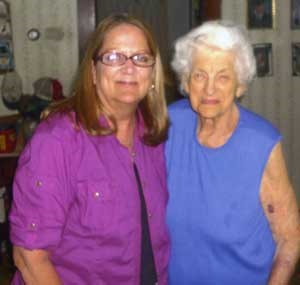

Charlotte, right, received a cornea transplant with tissue donated by Cody,
son of Bonnie (left). After years of
correspondence, Charlotte and Bonnie decided to meet each other.
Correspondence after donation and transplantation can be a positive part of the healing process for many people. Saving Sight offers donor families and cornea transplant recipients the opportunity to write to each other in a safe, positive environment. Acting as an intermediary, Saving Sight accepts the letters and then passes them on to the appropriate parties, which helps preserve everyone’s anonymity. Recipients and donor families alike have said that correspondence had therapeutic effects.
When Bonnie’s son, Cody, died in Divernon, Illinois after a car accident, he was able to donate skin and corneas. “Cody always wanted to be an organ donor,” she said. One of his corneas was received by Charlotte from Clinton, Missouri, who needed the transplant to treat a corneal infection that threatened to destroy her entire eye. Quite soon after her transplant surgery, Charlotte initiated the correspondence process with the help of Paul, her son who lived with her and cared for the family farm. Paul said his mother was eager to correspond with her donor’s family because she understood loss, having recently lost two grandchildren. “Because of that unselfish loved one was a donor and gave me a gift, I still have my eye,” Paul remembered Charlotte saying. “So she wanted to contact the family and thank them.”
With Paul’s help, Charlotte sent a letter to Saving Sight which was then passed on to Scarlett, Cody’s wife. “Scarlett didn’t feel like she was ready to correspond, so I asked permission to correspond instead,” said Bonnie. And with that, Bonnie and Charlotte began the process of getting to know each other. “Charlotte was very understanding that someone died to give her this cornea,” Bonnie recalled. “She was a really sweet lady.”
When people correspond for more than a year and both parties consent to communicating without anonymity, Saving Sight will connect the donor family and recipient so they can pursue contact on their own. Bonnie and Charlotte wrote several letters in that first year and continued contact in the years that followed.
“We talked on the phone sometimes, at birthdays and at Christmas,” Bonnie said. Eventually, Bonnie offered to visit Charlotte at her home in Clinton. “My daughter Tara and I had discussed from the time I first started corresponding with Charlotte how we would love to meet her, although we knew it would be difficult on us. However, Tara was unable to come with me so I drove there on June 16, 2012, which was Cody and Scarlett’s wedding anniversary,” Bonnie said. “I stayed at Charlotte’s house for three or four hours and met Paul. We had a wonderful visit. It was nice to have a part of Cody with her, to know that he lived on. Cody had big blue beautiful eyes, and I just loved the fact that I got to meet her and look in her eyes.” Paul said the feeling was mutual: “It meant a lot to Mom to get to finally meet the person behind the voice on the phone, as Mom was unable to travel long trips.”
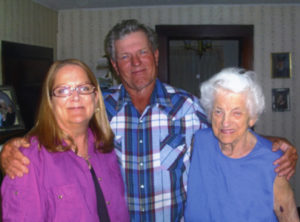
Charlotte, a cornea recipient, corresponded with Bonnie, the mother of a donor.
Despite the happiness of meeting Charlotte face to face, Bonnie also found the experience to be emotionally trying. “I held it all together until I drove out of her driveway, and then I cried all the way home,” Bonnie said. “It was Father’s Day the next day and just meeting her – she was a wonderful lady. She was very appreciative of how Cody had died but was willing to give his cornea. She never took it for granted. That’s why she wrote the letter – she wanted to know about the person who donated and his family.”
Charlotte’s daughter made quilted table cloths, and she gave one to Bonnie as a keepsake from their visit. “I cherish that,” Bonnie said. “Charlotte had health issues, and I think she knew we wouldn’t see each other again.” In April of 2013, Charlotte passed away at the age of 91, and thanks to Paul’s care, she was able to remain on the farm until a few days before her death.
Paul described his mother as having “an abundance of love that she shared with her eight children and many outside her family” and that she “was proud of Bonnie’s friendship.” Bonnie, too, looks back fondly on the trip: “I felt so fortunate to have met Charlotte. It’s hard to explain what it’s like to meet someone who has your son’s cornea. But I can’t say enough how blessed I felt by it all.”
To learn more about the young man whose generous donation brought Bonnie and Charlotte together, read Cody’s story. To learn more about Saving Sight’s correspondence process, visit our cornea donation and transplantation page.
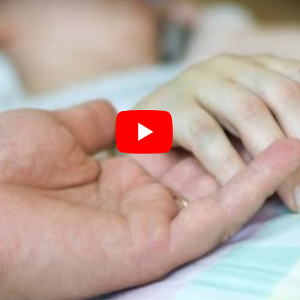
In April 2013, Saving Sight shared a story about Arnold, a happy-go-lucky man who donated his corneas to give the gift of sight to others. Arnold was a long-haul truck driver from Maine who passed away while in Springfield, Illinois for work, and his wife, Marie, supported his decision to become a donor, even though she was hundreds of miles away. “Following through with his wish to be a donor was never a hesitation in my shock and grief,” she said.
After the donation, Marie corresponded with one of the recipients of Arnold’s corneal tissue and learned a lot from the experience. She had this to share: “[Donation] isn’t just something you do – it’s life-changing for the recipients and the people who are left behind. Science gives us the technology to make these gifts happen, but without people giving so unselfishly, we could not bring about the life-changing results I have witnessed firsthand.”
Recently, Vince Dixon, a family friend of Marie, was touched by the stories of Arnold and other donors. And he decided to honor them and draw attention to the importance of donation by writing an original song, “Heart of a Hero,” which he then posted as a video to YouTube. Arnold is prominently featured in the video, starting at one minute and thirty seconds and at the end. Watch and listen to “Heart of a Hero” below to see the lasting impact Arnold has had as a donor.
Watch family friend Vince Dixon’s video tribute to Arnold and other donors featuring his original song, “Heart of a Hero.”
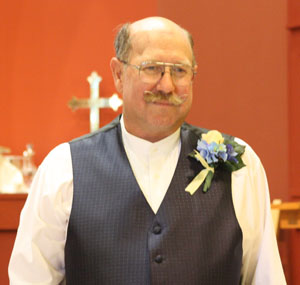
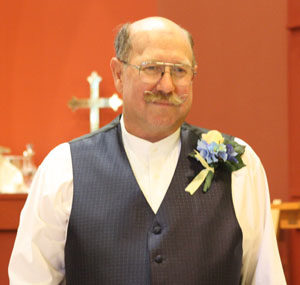
“He was bigger than life, over six feet tall with a full handlebar moustache that was his trademark – full of fun, happy-go-lucky, always laughing,” said Marie.
Marie met Arnold about three years ago, just a few years after he moved to Maine from Colorado. They met on a blind date, the kind where one thing leads to another and soon they were celebrating what they called their “international marriage,” she being from Canada and he from the U.S. “He was bigger than life, over six feet tall with a full handlebar moustache that was his trademark – full of fun, happy-go-lucky, always laughing,” she said. “He had an amazing mind for details. A friend had mentioned in passing that a neat dollar coin she’d had was accidentally spent. So Arnie found the coin – a few of them, actually, from a few years in a row – and gave them to her.” This spirit of generosity, of connecting with the people around him, permeated his life and included his decision to sign up on the donor registry.
As a long-haul truck driver, Arnold traveled the United States for work and had been to every state except Alaska, either by truck or vacationing. Marie got the call one day from St. John’s Hospital in Springfield, Illinois and learned that Arnold had passed away from a heart attack while making a delivery there. She notified her family and soon received a call from the procurement agencies asking if Arnold wanted to be a donor. “Following through with his wish to be a donor was never a hesitation in my shock and grief,” she said. Marie has said that a lot of the circumstances following Arnold’s death have seemed “meant to be.” She knew that he had signed up on the donor registry and that he meant to generously give of himself to others when he died. Through Heartland Lions Eye Banks and Gift of Hope, the organ procurement organization serving the northern threefourths of Illinois, Arnold was able to donate his corneas, bones from his legs and arms, and skin tissue. His mother had been severely burned as a child on her chest, so his donation of skin tissue was meaningful because he will get to help someone else who has suffered from a burn.
One of Arnold’s corneas was given to a person in Argentina, which Marie appreciated because it reminded her of their international marriage, but Arnold’s corneal donation to a recipient in the Kansas City area has held even greater significance for Marie. She went to the post office one day to pick up her mail and received a card from the recipient. The woman had suffered from Fuchs’ dystrophy, a hereditary disease that causes a disintegration of the interior of the cornea, and had to use binoculars just to watch her grandsons play football. But now her sight is bright and clear and “pure happiness” overcomes her. “After I opened the letter, I sobbed in my car outside the post office,” Marie said. “When Arnie and I got married, I had children and grandchildren, but he didn’t. He delighted in being their dad and grandfather. It was great that she could see her grandchildren play sports.” That Arnold had a love for all sports – he was an avid men’s league fast-pitch softball player – contributed to the letter’s power. Connections like these have come forth since Arnold’s donation and given the loss of him a meaningfulness that is comforting to Marie. “To know that this gift has brought bright and clear vision and a sense of pure happiness to another human has made me smile from the inside out,” she said.
After receiving the letter, Marie called her friends and family to tell them about it. She posted it on Facebook, telling people to sign up for the donor registry and speak with their families about their wishes. She now actively promotes donation in her community and shares her story and the cornea recipient’s words. “I have my donor card signed, too, but it’s something I did and never thought about again until I had to go through it,” Marie said. “But now I know it makes a difference. It isn’t just something you do – it’s life-changing for the recipients and the people who are left behind. Science gives us the technology to make these gifts happen, but without people giving so unselfishly, we could not bring about the life-changing results I have witnessed firsthand.”
You can join Marie in signing up for your state’s donor registry by visiting Donate Life America or your local Department of Motor Vehicles office.
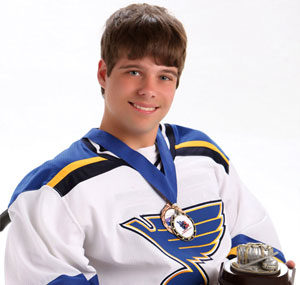

Danial played for the St. Louis Blues sled hockey team that won a national championship in April 2012.
A Young Man’s Legacy: Coices of Independence and Donation
I. “Everybody loved Danial, and he loved everyone.”
When Danial Miller was born with spina bifida, the most common permanently disabling birth defect in the United States, his mother, Terri, decided she would do whatever it took to give him a “normal and independent life.” And by all accounts, he had just that. Danial used a wheelchair, but he also learned to drive, went to prom, played piano (“Lean On Me” was his favorite song), wrestled for the Hillsboro High School team, and started college coursework.
In the small, rural town of Hillsboro, Illinois, Danial was well-known, and the community embraced him. Hillsboro may not be the most accessible place on Earth for someone with a disability, but this did not prevent Danial from making an impact there. “He felt empathy for others,” Terri said. “He would talk his friends through the problems they were facing.” It is most certainly Danial’s abilities to give of himself to others and excel in his many interests that make his life so memorable.
II. “This is what I want to do.”
What wasn’t simply “normal” about Danial’s life was his interest in and success at sled hockey. Sled hockey is an adaptation of ice hockey that involves equipment altered to enable people with physical disabilities to skate and play.
While at a St. Louis Cardinals game, the Miller family was approached by a representative of the Disabled Athlete Sports Association (DASA), who asked if Danial liked sports. He responded, “I love sports, but I can’t play much.” And with that, the Millers’ relationship with DASA was formed. What would begin with a DASA-sponsored kayak outing eventually led to Danial joining the St. Louis Blues Sled Hockey team.
The first time Danial got off the ice rink, he knew sled hockey was for him. “It changed his life,” Terri said. “On the ice he could do the things he wanted to do. His disability was gone on the ice.” Excelling at hockey improved his self-esteem and self-confidence. In fact, Danial’s team went on to win the national championship in Dallas, Texas in April 2012 by defeating the Blackhawks 4-3 in overtime.
III. “I’ve lived with a disability. If someone could give me a gift to heal me, you bet I’d take it, and I’d be so grateful for it.”
Part of the independent life Danial led involved learning to drive. The Millers hired an instructor from the St. Louis area to teach him to drive on a vehicle modified so as to be driven entirely with his hands. When he got his license, Danial made the choice to sign up for Illinois’ state donor registry. “He was clear on what he wanted to do,” Terri said.
When Danial died last June of complications related to his condition, just two weeks after his eighteenth birthday, there was no question in Terri’s mind that he would become an eye, organ, and tissue donor. He was able to save and improve the lives of numerous people by donating his corneas, kidneys, pancreas, liver, and heart valves as well as other tissues for spina bifida research.
Danial’s cousin had received a cornea transplant a year before he passed away, so he understood firsthand just how much eye donation can help another person. The Miller family had summer plans to go to the Gulf of Mexico so Danial could finally experience the ocean, and, as it turns out, his corneas were placed in Hawaii. In a way, Terri said, “he got to see the ocean.”
IV. The Danial Miller Memorial Fund
His legacy of giving lives on in the Danial Miller Memorial Fund. Begun by Terri soon after Danial’s passing, the fund is committed to helping eliminate barriers to independent living for people with disabilities, and it supports programs that allow them to live more fulfilling lives through greater opportunities. Terri uses the fund as a clearinghouse to donate to other causes. Some organizations the fund has already supported include St. Jude Children’s Research Hospital and Hillsboro Runners Club. And in the future, Terri would like to give to DASA Sports, the Spina Bifida Association, and Shriners Hospitals for Children and to fund projects in her community that support activities and accessibility for disabled people. To learn more and to support the fund, you can visit www.danialmiller.com.
Danial’s legacy also illustrates the lasting benefits of eye, organ, and tissue donation. “I buy into the idea of donation,” Terri said. “Nobody gave up on Danial even though he was a donor.” His decision to be a donor has significant longterm effects in the lives of his recipients, including the gift of sight, the gift of life, and the potential for advancements in spina bifida treatment. They’ll regain the independence Danial and his family were always choosing to pursue. As Terri put it, “Danial’s whole life was about choosing life,” and as a donor, he’s done just that.
Read more about eye donation on our site, and sign up to be an eye, organ, and tissue donor on your state’s donor registry at Donate Life America.


Mariah was always known for her gentle and caring spirit. Said Merry, “She had a heart that was full of love. The feature that her friends missed the most was her hug that usually included a twirl and/or a pat on the fanny for encouragement. She was quick-witted and always had a funny story to share.”
Throughout high school, Mariah worked on the school newspaper and yearbook and was a member of the Junior Police Academy. Her plan was to attend Georgia State University and major in psychology. Unfortunately, Mariah’s dreams were cut short in 2009 when she was involved in an auto accident the day before her high school graduation. Eight days later when she lost her life, her parents had to make the difficult decision whether or not to donate her organs and tissue. Because of their strong faith and Mariah’s caring personality, the family agreed to donation.
For Merry , the choice was obvious because, “Mariah was very generous by nature. In her own words from her social networking site – ‘I love to help everyone. If I have it in my power to do something for you, I never hesitate.’ It was this spirit that led us to continue her legacy of giving through organ donation.”
Mariah’s organs were donated through Midwest Transplant Network while Saving Sight provided her corneas to a recipient in Missouri who was able to regain her sight and her independence.
“It Can Wait”
Because Mariah’s accident was caused by texting and driving, Merry made it her mission to spread awareness of its dangers to save teens and parents from the same heartache. Shortly after Mariah’s death, Merry shared her story on her local news, capturing the attention of AT&T which was developing a texting public awareness campaign.
In 2010, Merry became one of the spokespeople for AT&T’s “It Can Wait” anti-texting-while-driving campaign, and Mariah’s story was featured in its “The Last Text” documentary. Merry traveled to Dallas on a satellite media tour to 18 different cities, was featured on CNN and Good Morning America, and was interviewed by USA Today.
In addition to her work with AT&T, Merry and her family are setting up a foundation in Mariah’s honor to inform teens about the dangers of distraction, both from a texting while driving aspect and from a spiritual aspect. Their “Where U At?” ministry, based on the last text Mariah ever received, will encourage teens to look at where they stand in relationship with God.
By sharing Mariah’s story to protect the lives of teens around the world, Merry is allowing Mariah to fulfill one of her most important dreams. “Mariah wanted to become a psychology teacher and work with inner-city kids. It’s funny how things work out. Even in her death she is still accomplishing her goal as a teacher.”
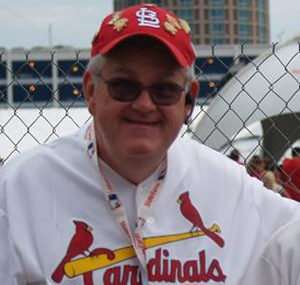

“Chris was such a loving, kind person,” said Cheryl.
When Chris of Jefferson City signed the back of his driver’s license, pledging to be an organ donor, he wasn’t sure donation would be possible if something happened to him because he had diabetes. Yet, according to his sister, Cheryl, his compassion for others led him to make the pledge – just in case.
In July 2011, while recovering from a stroke he suffered months earlier, Chris passed away from a sudden hemorrhage. In the shock following his death, Cheryl was reminded about Chris’ license and asked if she would consent to donation. She didn’t have to think twice.
“Chris was such a loving, kind person,” said Cheryl. “He would have been thrilled and surprised to know he could have donated anything. He considered himself older, and because of his diabetes, he didn’t think he’d ever be a candidate. To be honest, I didn’t realize it either until we went through the donation process.He would have really been happy to make any kind of contribution.”
Dedicated to helping others
Throughout his life, Chris was known for giving back to his community. After serving in the Marines during the Vietnam War, Chris continued his service to others by working for the state of Missouri as a classification assistant for the Department of Corrections.
He was also a dedicated family man and doted on his two nieces and one nephew. According to Cheryl, her brother was a second father to them, helping with diaper changes and volunteering to babysit. As they entered their teen years, Chris, an avid reader, was their “go-to guy” for help with history and technology homework.
Almost as dear to Chris’ heart were his beloved St. Louis Cardinals. From the time he was young boy, he followed the team, and as he was recovering from his stroke, his family joined him to listen and watch the team’s roller coaster 2011 season. Their miraculous win in October was bittersweet, but says Cheryl, “I’m quite sure he was dancing in Heaven during the World Series this year.”
A life of service continues
Chris had no idea the impact he would make on families across the country when he signed his license. Through his pledge, Chris saved the lives of his lung and liver recipients, and enhanced the lives of many more through his gifts of corneas, bone and skin to Saving Sight and Midwest Transplant Network (MTN).
Just as important, he helped provide hope in the midst of his family’s grieving process. “Donation was a healing experience,” remarked Cheryl. “Since I didn’t get to talk to him right before he died, and there were no final words, this was the last thing I could do for him. It was really rewarding to feel like I could carry something out he would have wanted.”
Receiving general information from MTN and the Eye Bank in regards to Chris’ recipients has provided a sense of peace as well. “The letters we have received about the transplant recipients have greatly helped with the healing process of losing a loved one. It seems almost like a miracle. I cannot think of a single reason not to become a donor.”
For more information on registering as eye, organ and tissue donor in the state of Missouri, please visit www.donatelifemissouri.com.